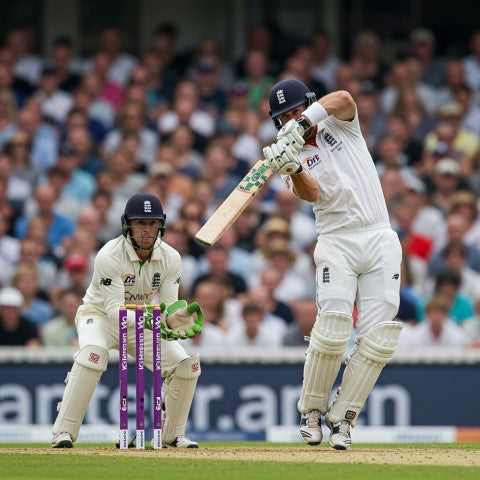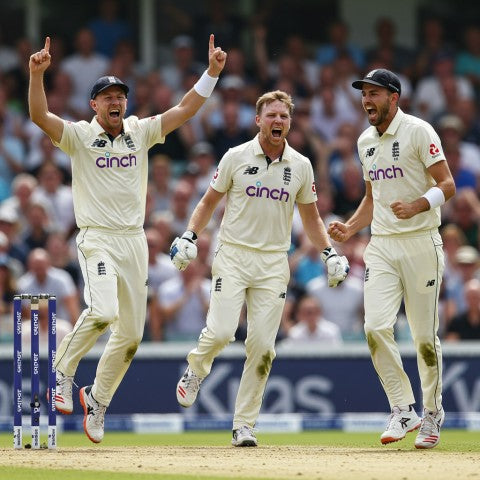What Is SA20? South Africa’s Answer to the IPL

In the ever-expanding landscape of franchise T20 cricket, one league has emerged with the clear intent to revitalise an entire nation’s cricketing identity. It’s bold, it’s ambitious — and it’s called SA20.
Launched in 2023 by Cricket South Africa (CSA) in collaboration with broadcaster SuperSport, SA20 is South Africa’s first serious attempt at establishing a globally relevant T20 franchise competition. More than just another addition to the calendar, the league was created to rescue the nation’s cricketing fortunes from financial instability and to rekindle domestic interest at a time when Test matches were drawing sparse crowds and funding was drying up.
What sets SA20 apart isn’t just its local focus — it’s the IPL’s fingerprints all over it. All six SA20 teams are owned by IPL franchise owners. The colours, the branding, the investment — it’s South Africa’s version of the IPL blueprint, adapted to local flavour but aiming for global attention.
But is it working? Can SA20 stand out in an already packed cricket economy? And what does it mean for the future of South African cricket — and global T20 leagues?
Let’s break it down — from launch day hype to player drama — and explore why SA20 might just be the rebirth of a cricketing powerhouse.
1. A New Era Begins: Why SA20 Was Launched
South African cricket was in trouble. Financial losses were mounting, domestic crowds had thinned, and the sport was losing its grip on younger audiences. With traditional bilateral series bringing in diminishing returns, Cricket South Africa knew it needed a commercial solution — and fast. That solution was SA20.
It wasn’t CSA’s first attempt. The T20 Global League was launched and swiftly cancelled. The Mzansi Super League showed promise but lacked the funding and consistent support to scale. SA20 was the third swing — and this time, they brought in reinforcements.
SuperSport, one of the biggest broadcasters in African sport, partnered with CSA to ensure wall-to-wall coverage. More importantly, CSA handed over team ownership to deep-pocketed IPL investors. That strategic decision guaranteed not just financial muscle but credibility.
The goal was to create a league that could both entertain fans and fund cricket development. Salaries were competitive, overseas players were attracted, and local talent was given a global platform. The calendar was cleared of all other domestic cricket to give SA20 exclusive focus.
In short, it wasn’t just another league. It was a statement. A declaration that South African cricket was ready to rebuild — not through nostalgia, but through the commercial engine of modern sport.
And SA20 is the vehicle they’re betting it all on.
2. Format and Structure: How SA20 Actually Works
SA20 might borrow from the IPL’s template, but it brings its own flavour. Six teams — each based in a major South African city — compete in a double round-robin league stage followed by semi-finals and a final. All matches are scheduled over a single window in January–February, allowing maximum exposure and avoiding clashes with international series.
Each squad consists of a mix of South African and overseas players, with four foreign players allowed in the playing XI — a balance designed to develop local stars without compromising quality. Teams were built via an auction system, which added drama and media coverage even before the first ball was bowled.
One standout feature is the fan-first scheduling. Games are played in the evenings or weekends, ensuring working audiences can attend or tune in. The ticket pricing strategy has also been aggressive — keeping costs low to fill stadiums, especially in markets that had grown cold to domestic cricket.
Points are awarded not only for wins but also for bonus points if a team wins by a big margin — a clever innovation that incentivises aggressive cricket. It also ensures net run rate doesn’t entirely dictate qualification spots.
In essence, SA20 was designed to entertain, empower, and evolve — a league purpose-built to plug South Africa’s structural gaps while delivering box office action.
3. The IPL Connection: Franchise Ownership and Influence
If you’ve watched SA20 and thought, “Hang on, these team logos look familiar,” you’re not imagining things. Every SA20 franchise is owned by an Indian Premier League parent company. That’s not a coincidence — it’s a deliberate partnership.
MI Cape Town? Owned by Mumbai Indians. Paarl Royals? Rajasthan Royals. Pretoria Capitals? Delhi Capitals. The list goes on. This cross-ownership model isn’t just about branding — it’s about logistics, scouting, and creating a unified talent ecosystem across continents.
IPL owners brought more than cash. They brought marketing know-how, global player management experience, and the ability to elevate SA20’s profile from day one. The Mumbai Indians, for example, promoted their Cape Town team to a global fanbase even before they took the field — a level of visibility no South African domestic team had ever enjoyed.
This model also fosters cross-league player pipelines. A standout South African uncapped talent in SA20 may suddenly find himself on an IPL radar. Conversely, underused IPL benchwarmers now get game time in South Africa’s summer.
Of course, there are concerns. Is this the “Indianisation” of global cricket? Is it healthy for one nation’s franchises to own everything? Those debates are valid.
But for now, SA20 needed rescuing. And the IPL owners came armed with oxygen tanks.
4. Big Names, Big Moments: Star Power in SA20
Star power was never going to be optional. For SA20 to succeed, it needed names fans already knew — and it delivered. From Jos Buttler and Rashid Khan to Faf du Plessis and Quinton de Kock, the league attracted global faces in its very first edition.
And it’s not just about posters and promos. These players turned up to play. Anrich Nortje bowled thunderbolts. Heinrich Klaasen lit up scoreboards. Jofra Archer made a much-anticipated return in MI Cape Town colours. The league has quickly carved out its own moments — sixes into the stands, last-over finishes, and personal rivalries bubbling across formats.
Importantly, SA20 hasn’t just been a platform for stars — it’s created a few too. Dewald Brevis became a household name, turning youthful flair into match-winning knocks. Bowlers like Roelof van der Merwe and Lungi Ngidi found new rhythm on familiar turf.
The star factor also lifted attendance. Families came out. Young fans wore team jerseys. Social media buzzed with highlights. Cricket in South Africa felt loud again — and not just for Test match die-hards.
That blend of global elite and emerging talent is the key reason SA20 has been able to punch above its weight in such a short time.
5. Broadcast Reach and Commercial Impact
One of the most critical ingredients for any successful T20 league is visibility — and SA20 nailed this from the outset. SuperSport, South Africa’s dominant sports broadcaster, came in not just as a rights holder but as a commercial partner. That’s rare — and powerful.
Every match was available live, in HD, with full studio coverage, expert panels, and multi-language commentary. This wasn’t a domestic afterthought — it looked and felt like a global product. The visuals were slick, the promos smart, and the packaging competitive with any major cricket league.
Even more significantly, SA20 secured deals with international networks. Sky Sports took it to UK audiences. Viacom18 broadcast it in India via JioCinema — an unprecedented feat for a debut tournament outside of India. That exposure not only brought in global eyeballs but attracted overseas sponsors looking to tap into South Africa’s cricketing market.
Social media played its role, too. Official team accounts rolled out memes, match recaps, and mic’d-up player content — the kind of modern storytelling fans expect.
Commercially, SA20 still has ground to cover, but it’s off to a solid start. Ticket revenue was encouraging, merchandise sales began to climb, and brand interest is growing. For a league still in its infancy, that’s no small feat.
6. What It Means for South African Cricket
Beyond the glitz, SA20 exists for a deeper reason — to rescue and rebuild South African cricket from the inside out.
The domestic system had been under pressure for years. Financial cuts led to player exits, coaching instability, and declining interest at grassroots level. Provincial cricket was quietly shrinking. The national team, too, was losing its aura.
SA20 injects life into that ecosystem. Player salaries are up. Young talent has a stage. Coaches, physios, media staff — all benefit from the structure and investment the league demands. Most importantly, kids in South Africa now have heroes they can see in their home cities.
There's also an emotional side to it. SA20 has reminded fans what a lively stadium sounds like. It’s rekindled a sense of pride — and possibility — in a country where sport carries social weight.
The knock-on effect is already visible. Domestic tournaments are being restructured. Sponsorship discussions are back on the table. Even Test cricket, often the first victim of commercial T20, might benefit from the attention the sport is once again getting.
SA20 won’t solve everything. But for South African cricket, it’s the first step toward relevance, recovery, and maybe even resurgence.
7. How SA20 Compares to Other T20 Leagues
With so many T20 leagues popping up, where does SA20 actually sit?
It's not as wealthy or established as the IPL — but it’s not trying to be. It’s also not as chaotic as the Caribbean Premier League, nor as raw as the Bangladesh Premier League. What SA20 does offer is polish, parity, and potential.
The cricketing standard is strong. You get match-ups between world-class quicks and aggressive modern batters. Games are competitive, results unpredictable, and no single team has dominated. That's a sign of good auction planning and healthy squad depth.
In terms of production, SA20 feels slick — better than many leagues older than it. From LED boundary displays to field-level camerawork and in-stadium entertainment, it feels genuinely global. Importantly, its January window gives it breathing room between other major leagues, ensuring decent player availability.
It’s also one of the few leagues structured as a true partnership between board and broadcaster. That’s rare, and it gives SA20 stability others lack.
So while it's not yet in the top tier of T20 leagues, SA20 has done what few can: arrive with identity and ambition — and not fall flat. With time, it could become one of the most influential leagues in the southern hemisphere.
8. Challenges Ahead: Sustainability, Scheduling & Player Burnout
No cricket league — no matter how flashy — is bulletproof. SA20 has made a strong start, but its long-term survival will hinge on how it navigates a few key challenges.
First, sustainability. Franchise leagues are expensive. Player wages, venue costs, marketing — all add up. SA20 is currently propped up by major investors and broadcast money, but it will need to grow its revenue base steadily. Merchandise, ticket sales, and commercial partnerships must scale fast.
Second, scheduling. The global cricket calendar is a minefield. International tours, ICC tournaments, overlapping leagues — they all make player availability unpredictable. SA20 has so far held a solid January window, but it needs to secure that real estate permanently to avoid a future squeeze.
Third, player burnout. The same core players are being asked to play in multiple leagues, often with no break. While SA20’s window is short, CSA will need to manage workloads carefully if it wants its stars to shine year-round.
Lastly, the league’s ability to stay fresh — in marketing, gameplay, and audience retention — will decide whether it thrives or fades.
SA20 has the tools. Now it needs consistency, strategy, and the long game.
Conclusion: Why SA20 Might Just Be the Revival South African Cricket Needed
South African cricket has rarely done things quietly — and SA20 is no exception. It has arrived not just as a new league, but as a full-throttle attempt to rewire how the country approaches, funds, and markets its sport.
In just two seasons, it has reignited fan passion, brought world-class talent into local grounds, and proved that with the right structure, South Africa can host a league that feels global in scale and local in heart. It’s not perfect, but it’s progress.
Where other leagues launch with noise and fizzle out, SA20 has shown it’s more than a vanity project. It’s strategic. It’s backed. And it knows that its purpose isn’t just to entertain — but to rebuild. The question isn’t whether it’s working. The question is whether South African cricket can keep building on this platform without losing sight of its core values.
In a crowded calendar, SA20 still feels like it matters — and for a sport in need of reinvention, that’s already a win.





Leave a comment